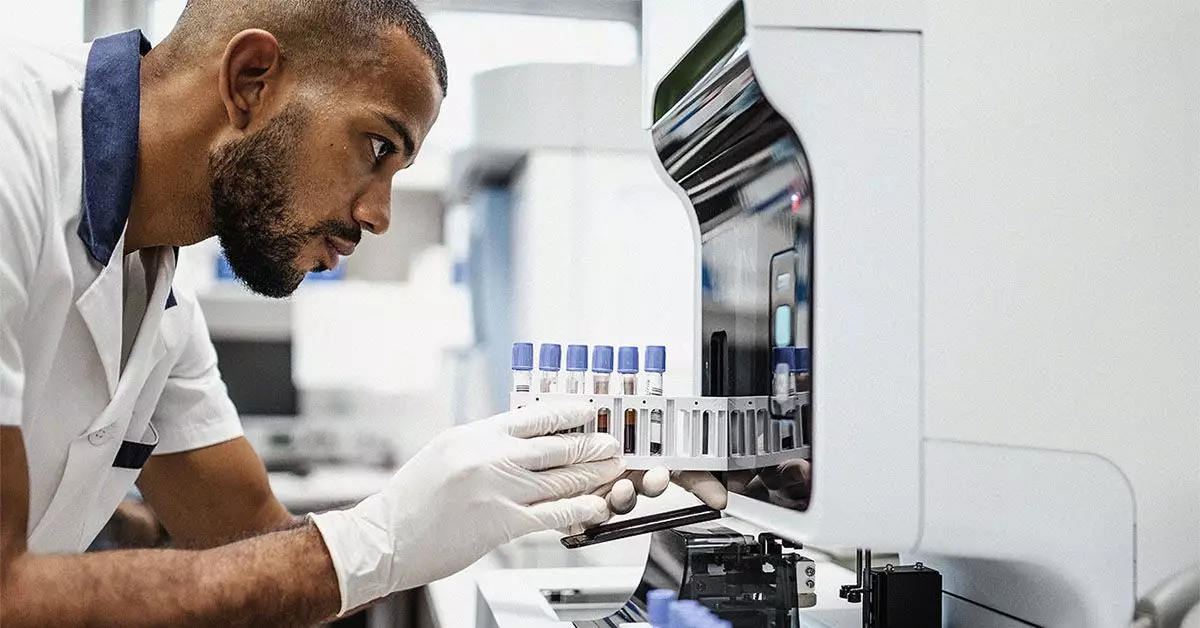Monoclonal antibodies (mAbs) represent a significant milestone in the advancement of medical science, particularly in the fields of oncology and infectious disease treatment. These lab-engineered proteins mimic the function of naturally occurring antibodies in the human body. Although initially conceived for cancer therapy, their utilization has expanded to combat various conditions, including viral infections like COVID-19. This article will delve into the mechanisms, applications, challenges, and future directions of monoclonal antibody therapy.
At its core, monoclonal antibodies are designed to target specific antigens, which are distinctive molecules found on the surface of cells or pathogens like bacteria and viruses. The human immune system is adept at producing a diverse array of antibodies; however, in certain scenarios—such as cancer—the immune response can falter as tumor cells may evade recognition. By engineering antibodies that specifically target these elusive antigens, scientists have created a tool that enhances the body’s innate defenses, effectively improving the outcome of treatments for both cancer and viral pathogens.
The process begins with the immunization of a mouse with the desired antigen, leading to the production of a specific antibody. The spleen of the mouse, which houses the immune cells that generate antibodies, is then harvested, and the relevant B-cells are fused with myeloma cells to create hybridomas. These hybrid cells are capable of unlimited reproduction and produce a uniform antibody, thus the term “monoclonal.”
Monoclonal antibodies have profoundly changed the landscape of cancer therapy over the past few decades. They can function in several ways: some enhance the immune system’s ability to fight cancer, while others are used to deliver cytotoxic agents directly to the tumor cells. For instance, monoclonal antibodies such as rituximab bind to specific markers on the surface of certain cancer cells, leading to their destruction through immune-mediated mechanisms or by marking them for delivery of chemotherapeutic drugs.
The advent of bispecific monoclonal antibodies, which can simultaneously bind to two different antigens, marks another crucial innovation. These sophisticated therapies bring together immune cells and cancer cells, amplifying the body’s capacity to target and eradicate malignancies. One notable example is blinatumomab, used for treating acute lymphoblastic leukemia by engaging T-cells directly with cancerous cells.
The COVID-19 pandemic catalyzed a global surge in the interest and development of monoclonal antibody therapies. Researchers quickly identified specific antibodies that could neutralize the SARS-CoV-2 virus, leading to the creation of treatments that could reduce the severity of the disease or prevent hospitalization. However, the effectiveness of these antibodies has varied depending on the circulating virus strains, prompting the continuous need for research and development.
Despite their potential, it’s critical to recognize that monoclonal antibodies are not a one-size-fits-all solution. The emergence of variants has demonstrated that some antibodies may not be effective against new strains of the virus. This underscores the importance of ongoing surveillance and adaptability in the therapeutic landscape.
Like any medical intervention, monoclonal antibodies are not devoid of risks. Patients may encounter a range of adverse effects, from mild reactions at the injection site to more severe complications such as allergic reactions or cardiovascular issues. Because of their targeted nature, these therapies tend to produce fewer side effects compared to traditional chemotherapeutics, but significant concerns still exist.
Another limitation is cost. Monoclonal antibody therapies are often expensive, and patients without proper insurance may struggle to afford these potentially life-saving treatments. Therefore, accessibility remains a critical issue in leveraging these advancements in healthcare.
Research into monoclonal antibodies is dynamic and ongoing, with impressive strides being made to uncover their full potential. Scientists are investigating ways to enhance their specificity and effectiveness, as well as to minimize side effects. The development of engineered antibodies with improved stability and efficacy is on the rise, promising to broaden treatment options available for various diseases.
Additionally, researchers continue to explore their applications beyond oncology and infectious disease. Early research into the use of mAbs for autoimmune conditions and chronic inflammatory diseases shows promise, potentially leading to new therapeutics that can redefine treatment pathways across diverse medical domains.
Monoclonal antibodies have emerged as a leading therapeutic modality, especially in oncology and infectious disease management. Their ability to target specific cells offers unparalleled precision in treatment, minimizing systemic effects associated with traditional therapies. While challenges remain, including cost and variant responsiveness, ongoing advancements and clinical research hold great promise for the future of monoclonal antibody therapies. As our understanding and technology evolve, so too will the efficacy and scope of these innovative treatments, ultimately aiming to enhance patient outcomes across various spectrums of healthcare.

